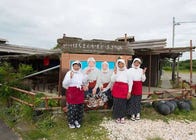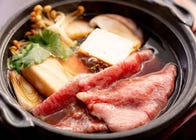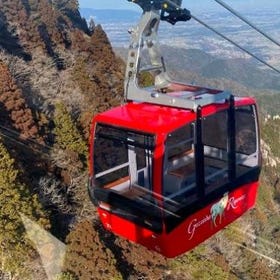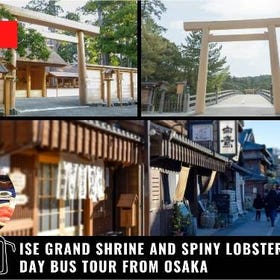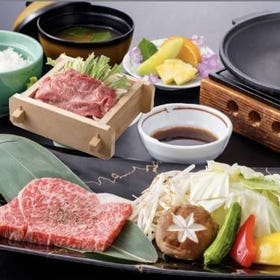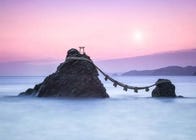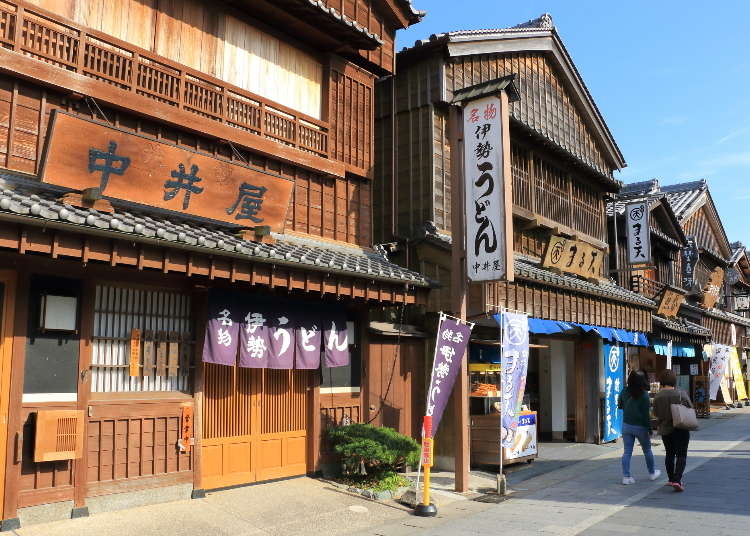
Mie Prefecture sits in the Kansai region of Japan, close to the center of the main island of Honshu. Often overshadowed by more famous neighboring prefectures of Kyoto and Nara, there are many hidden gems waiting to be explored in Mie. If you’re willing to take a wander off the beaten path, then read on to discover some of the best things to do in Mie Prefecture.
About Mie Prefecture

Located on Japan’s Kii Peninsula, Mie Prefecture boasts over 1,000 kilometers of curving coastline that overlooks beautiful Ise Bay to the north and the Pacific Ocean further south. While most of the prefecture’s larger cities can be found along the coast, Mie is also made up of huge areas of stunning countryside further inland. Featuring ancient pilgrimage routes and hiking trails through gorgeous rural landscapes, Mie Prefecture is a great place to explore for nature lovers.
The most famous landmark in Mie is Ise Shrine, one of the most important and sacred shrines in Japan. Alongside many places where you can explore Mie’s long history, you’ll also find plenty of opportunities for adventure too. There are numerous fun and unique theme parks dotted throughout the prefecture to help keep you thrilled and entertained. You’ll also find some of the best food in Japan in Mie, as well as some fine options for a spot of retail therapy too.
Getting to Mie Prefecture
From Tokyo to Iseshi Station (Ise):
Take the Tokaido-Sanyo Shinkansen to Nagoya Station (around 1 hr 37 min). Then change to the JR Rapid Mie bound for Toba, to Iseshi Station (around 40 min).
From Osaka to Iseshi Station:
From Kintetsu Osaka-Namba Station, take the Kintetsu limited express all the way to Kintetsu Iseshi Station (around 2 hours). Note that a brief transfer at Kintetsu Tsu Station may be required.
To save on transportation costs during your trip to Mie Prefecture, you may wish to consider the following rail passes.
Getting around Mie Prefecture
As much of Mie Prefecture is very remote, you may want to consider hiring a car to really get the most out of a trip to Mie.
Large areas of Mie are not served by train lines, especially in the more rural areas away from the cities on the coastline.
If you’re looking to explore some of Mie’s mountainous hiking trails, for example, you might decide that you need to hire a car. Remember that you’ll need to obtain an International Driving Permit from your home country before arriving in Japan to be able to hire a car.
The best things to do in Mie Prefecture
Nagashima Spa Land: Experience Thrills and Fun
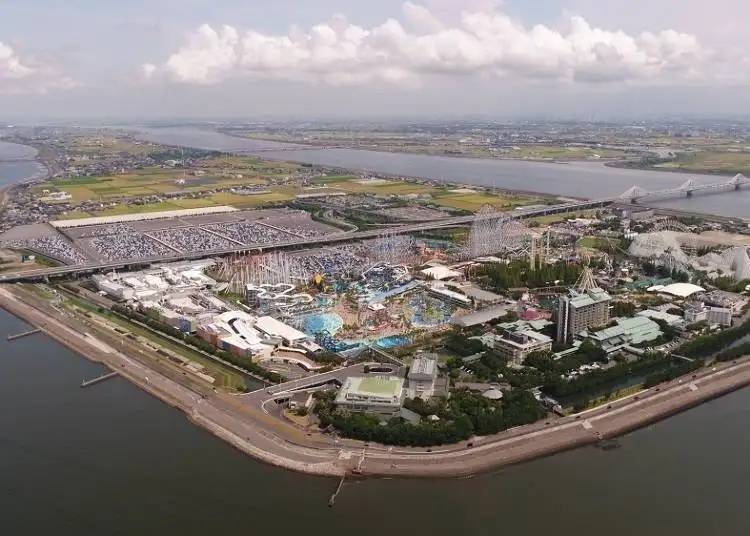
If you love the thrill of white-knuckle rides, then Nagashima Spa Land is the perfect place for you. A part of the larger Nagashima Resort, Nagashima Spa Land is a massive amusement park close to the border with Aichi Prefecture. Nagashima Spa Land is famous for having some of the best roller coasters in Japan. In total, there are 10 roller coasters at Nagashima Spa Land, including Steel Dragon 2000, which holds the Guinness World Record for being the world’s longest roller coaster.
There’s more to Nagashima Spa Land than adrenaline-fuelled roller coasters. Other attractions include a giant 90-meter-tall Ferris wheel and the Joyful Waterpark, which features a number of different pools and water slides. There are also several hot-spring onsens for those looking to relax after a hair-raising ride on Spa Land’s roller coasters.
-

-
Address
333, Nagashimachourayasu, Kuwana-shi, Mie, 511-1135
View Map -
Nearest Station
Kuwana Station (JR Kansai Main Line)
20 minutes by bus
- Phone Number 0594-45-1111
-
Address
333, Nagashimachourayasu, Kuwana-shi, Mie, 511-1135
Nabana No Sato: Delight in Flowers and Dreamy Illuminations
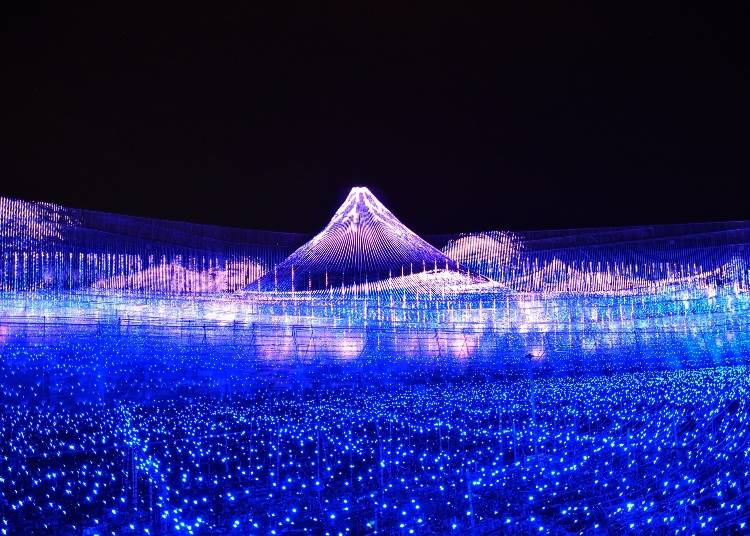
Nabana No Sato is a fabulous flower park that is near the Nagashima Resort. A wide range of different flowers blooms at Nabana No Sato throughout the year. Beautiful plum and cherry blossoms take center stage in the spring, while thousands of tulips, roses and begonias produce a rainbow of colors during the summer. There are also several indoor areas with flowers displayed in colorful arrangements, as well as an observatory tower for incredible views of the whole garden.
Nabana No Sato is most famous for its spectacular winter illuminations, one of Japan's biggest light festivals. Each year, the festival takes on a different theme, and the park is lit up in a huge, colorful display of light. There are also several light shows, including the River of Light, the largest illumination display on water in Japan. Another of Nabana No Sato’s major winter attractions is the Tunnel of Light, a 200-meter corridor of LED lights that visitors can walk through.
-

-
Address
270, Nagashimachokomae Urushibata, Kuwana-shi, Mie, 511-1144
View Map -
Nearest Station
Nagashima Station (JR Kansai Main Line)
21 minutes on foot
- Phone Number 0594-41-0787
-
Address
270, Nagashimachokomae Urushibata, Kuwana-shi, Mie, 511-1144
Mikimoto Pearl Island: Discover Pearls' Secrets
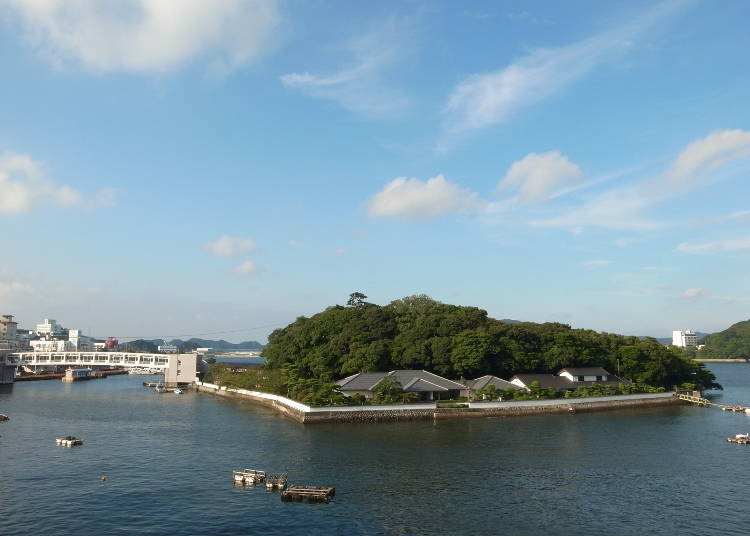
Mikimoto Pearl Island is a fascinating museum located in Toba, just a few train stops from the city of Ise. The museum is dedicated to Mikimoto Kokichi, the first person to discover how to artificially cultivate pearls, who was born in Toba in 1858. The museum explains how Mikimoto learned how pearls could be cultivated and the lengthy processes involved in doing so. Also on display are some truly staggering examples of luxurious vintage jewelry and antiques decorated with pearls.
Pearls were traditionally caught in Japan by female divers called ama. From a viewing platform next to the museum, you can watch a group of ama dive for pearls in the waters just off the island. The ama’s dives take place every hour on the half-hour throughout the day. If you have deeper pockets, then the museum also features a shop, which has an extensive range of beautiful pearl jewelry.
-

-
Address
1-7-1, Toba, Toba-shi, Mie, 517-8511
View Map -
Nearest Station
Toba Station (JR Sangu Line)
7 minutes on foot
- Phone Number 0599-25-2028
-
Address
1-7-1, Toba, Toba-shi, Mie, 517-8511
Meet Mie’s Freediving Ama: Dive into Tradition
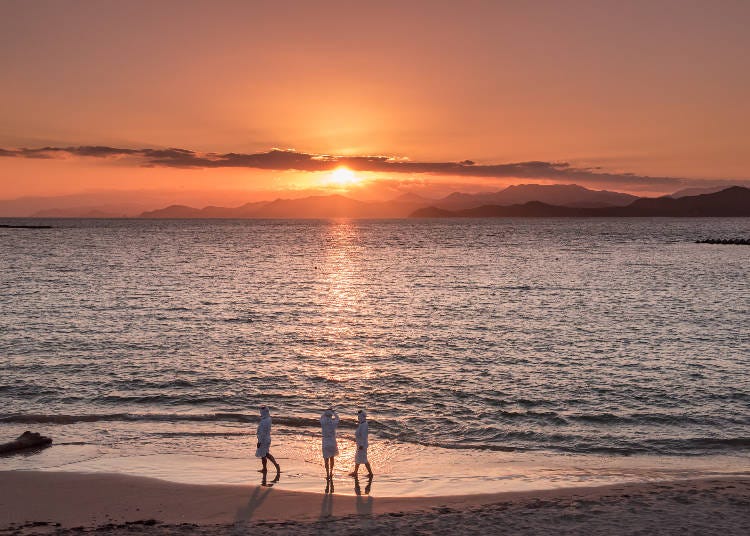
If you’d like to know more about Japanese female sea divers you can meet with a group of ama and learn more about their history. The ama divers host visitors in a traditional sea hut that they use to prepare for dives on the Mie coastline. As well as freediving for pearls, the ama have also traditionally dived to catch seafood, a traditional way of hunting that is thought to be at least 1,000 years old.
As part of the experience, the ama will teach you about the long history of female freediving in Japan. The ama will also lead a traditional dance, before preparing and serving a selection of some of the sumptuous seafood that can be found in the waters around Mie, including abalone, lobster and oysters.
Ninja Kingdom Ise: Unleash Your Inner Ninja
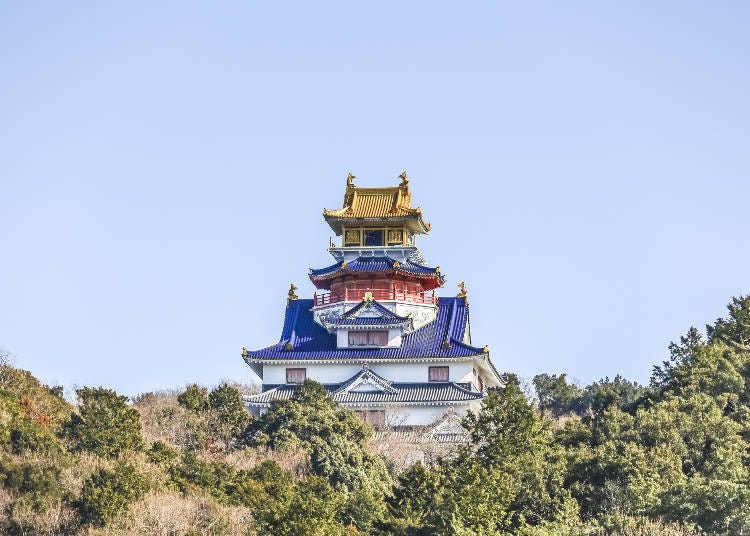
Ninja Kingdom Ise is a samurai-based theme park inside a recreation of a traditional Japanese castle. The theme park is perched high on top of the hills near Ise and is an exact replica of Azuchi Castle, which was once home to one of Japan’s most powerful samurai. Various activities at Ninja Kingdom Ise bring these legendary warriors from Japanese history to life. Visitors can enjoy numerous live performances, including reenactments of ninja battles.
Ninja Kingdom Ise also features a museum of traditional Japanese swords while there are other interactive attractions too. You can take part in a live action RPG, where you try to rescue a prisoner from ninjas without being caught. You can also try your hand at archery and practice your aim with the ninja’s weapon of choice, throwing stars. You can also tackle the Ninja Forest Adventure, an outdoor adventure course complete with a zip wire.
-

-
Address
1201-1, Futamichomitsu, Ise-shi, Mie, 519-0603
View Map -
Nearest Station
Futaminoura Station (JR Sangu Line)
17 minutes on foot
- Phone Number 0596-43-2300
-
Address
1201-1, Futamichomitsu, Ise-shi, Mie, 519-0603
Shima Spain Village: Embrace Spanish Charm
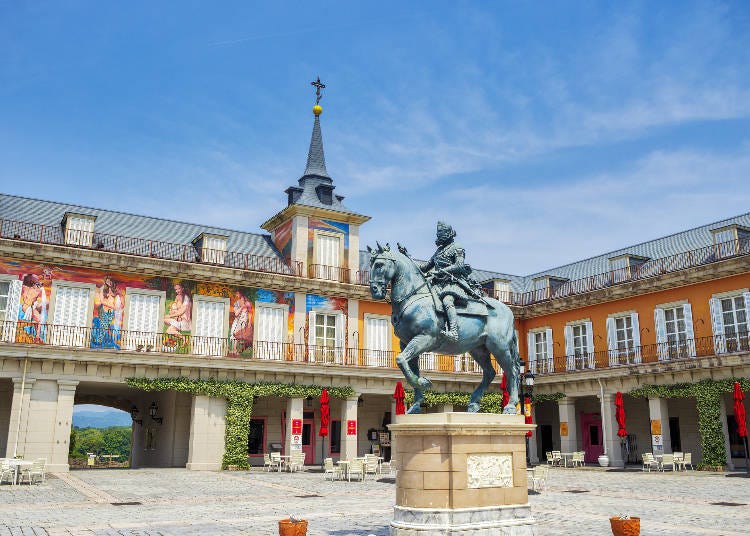
As its name suggests, Shima Spain Village is a Spanish-inspired theme park where you’ll be forgiven for thinking you’re in Madrid rather than Mie. The park contains plenty of mock Spanish architecture, including grand town squares, pretty white villages, and even a museum housed inside a replica of a Spanish castle. Shima Spain Village also features amusement park rides, including roller coasters and log flume rides.
A destination aimed at the entire family, there is plenty at Shima Spain Village for those traveling with young children too, including Spanish-style street musical performances and parades, circus acts, and face painting. The park also has several Spanish restaurants as well as a host of souvenir shops, perfect for picking up a memento from your time from the small corner of Spain in Mie.
-

-
Address
952-4, Shimoyama, Isobechosakazaki, Shima-shi, Mie, 517-0212
View Map -
Nearest Station
Ugata Station (Kintetsu-shima Line)
29 minutes on foot
- Phone Number 0599-57-3333
-
Address
952-4, Shimoyama, Isobechosakazaki, Shima-shi, Mie, 517-0212
Suzuka Circuit: Feel the Speed
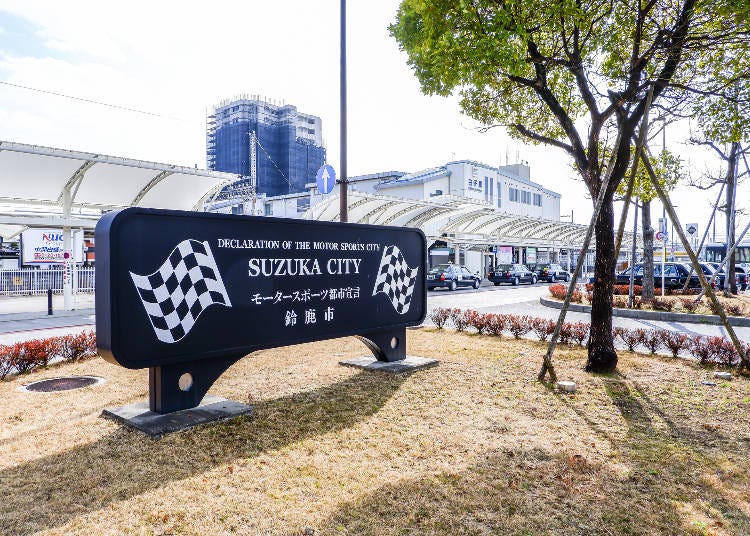
Also known as Suzuka International Racing Course, the Suzuka Circuit is perhaps the most famous race track in Japan. The track hosts many major motorsports events throughout the year, including the Formula One Japanese Grand Prix. Several other sports have been held here, including touring car races, superbike races, and NASCAR events. The track is said to be the favorite of many Formula One drivers and many world Formula One titles have been won and lost at the Suzuka Circuit.
Next to the race track is Suzuka Circuit Motopia, an amusement park with a number of car-themed rides suitable for a variety of different ages, including go-karting. In the Racing Theater you can even experience all the action from behind the scenes on race day. The Suzuka Circuit also features a water park as well as numerous hotels, and an on-site restaurant.
-
Suzuka Circuit Motopia鈴鹿サーキットパーク
- Address 7992 Inoucho, Suzuka, Mie 510-0201
The Wedded Rocks: Witness Eternal Love
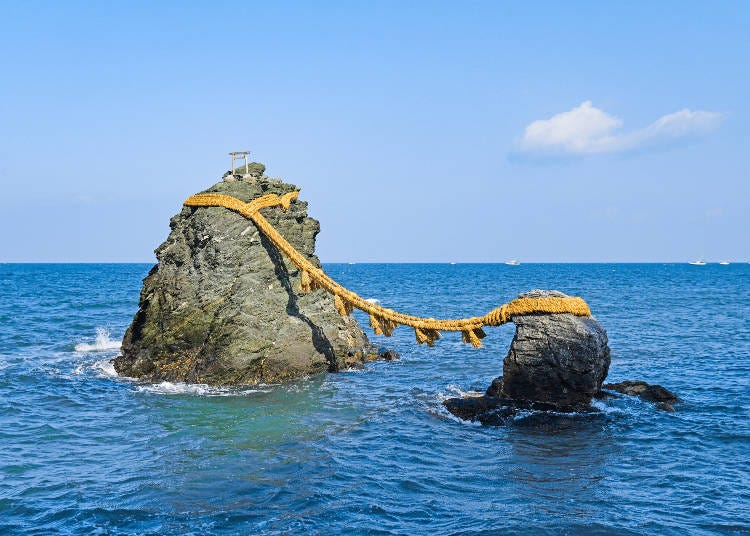
Located in the town of Futami, Meoto Iwa, or the Wedded Rocks, are one of Mie Prefecture’s most famous landmarks. Meoto Iwa is a part of the Futami Okitama Shrine, which directly faces the rocks on the banks of the sea. Sitting side by side in the Pacific Ocean just a few meters from the shoreline, the two rocks are believed to represent two Shinto gods who were husband and wife.
A small torii gate sits on top of the larger rock, with the pair joined by a rope made of rice straw. The two rocks are believed to be a symbol of marriage, and the site is a popular destination for couples who come here to pray for a happy marriage. If you time your visit right you might get to see the spectacular sight of the sun rise between the two rocks. On clear days you can even glimpse Mount Fuji in the far distance.
-

-
Address
Futamichoe, Ise-shi, Mie, 519-0602
View Map -
Nearest Station
Matsushita Station (JR Sangu Line)
18 minutes on foot
- Phone Number 0596-43-2020
-
Address
Futamichoe, Ise-shi, Mie, 519-0602
Ise Grand Shrine: Find Serenity at Japan's Most Sacred Shrine
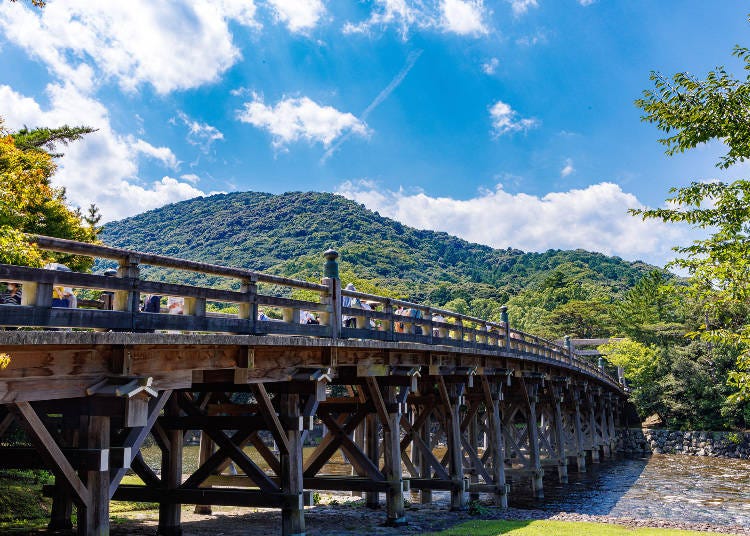
The Ise Grand Shrine is one of the most sacred religious sites in Japan. Enshrined here is the deity Amaterasu Omikami, the sun Goddess, who is one of the most important gods in the Shinto religion. Ise Shrine was founded over 2,000 years ago and has been a place of pilgrimage for hundreds of years. One of Mie Prefecture’s biggest attractions, today the shrine attracts millions of visitors every year.
Ise Shrine is actually made up of two different sites. The Outer Shrine is located a short walk from the center of Ise, with the main Inner Shrine around four kilometers to the southeast, situated on the banks of the Isuzu River. Both the Inner and Outer Shrines are nestled inside beautiful forested grounds. The main buildings in both parts of the Ise Grand Shrine are completely reconstructed every twenty years.
-

-
Address
1, Ujitachicho, Ise-shi, Mie, 516-0023
View Map -
Nearest Station
Isuzugawa Station (Kintetsu-toba Line)
30 minutes on foot
- Phone Number 0596-24-1111
-
Address
1, Ujitachicho, Ise-shi, Mie, 516-0023
Okage Yokocho and Oharai-machi: Step Back in Time
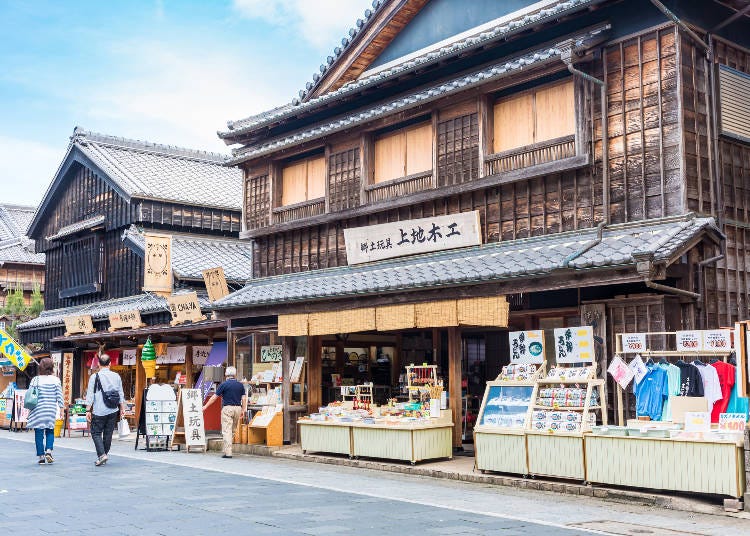
Oharai-machi and Okage Yokocho are two areas located side by side in Ise on the approach to Ise Grand Shrine’s Inner Shrine. Oharai-machi is the area’s old town that has welcomed visitors and pilgrims to the Grand Shrine for centuries. All along Oharai-machi’s main kilometer-long street are beautiful historic wood-paneled stores selling snacks, local souvenirs and a variety of street food.
Okage Yokocho was created in 1993 but has been designed and built to replicate Oharai-machi’s traditional Edo-era appearance. Just like Oharai-machi, Okage Yokocho features numerous souvenir stalls and shops selling local goods and crafts. There are also a number of excellent local restaurants here too, many of which specialize in fresh seafood caught from the waters of Ise Bay.
-

-
Address
52, Ujinakanokiricho, Ise-shi, Mie, 516-0025
View Map -
Nearest Station
Isuzugawa Station (Kintetsu-toba Line)
25 minutes on foot
- Phone Number 0596-23-8838
-
Address
52, Ujinakanokiricho, Ise-shi, Mie, 516-0025
-

-
Address
Ujinakanokiricho, Ise-shi, Mie, Imazaikecho, Uji, 516-0000
View Map -
Nearest Station
Iseshi Station (JR Sangu Line)
20 minutes by bus
- Phone Number 0596-28-3705
-
Address
Ujinakanokiricho, Ise-shi, Mie, Imazaikecho, Uji, 516-0000
Inabeshi Agriculture Park: Explore Nature's Bounty
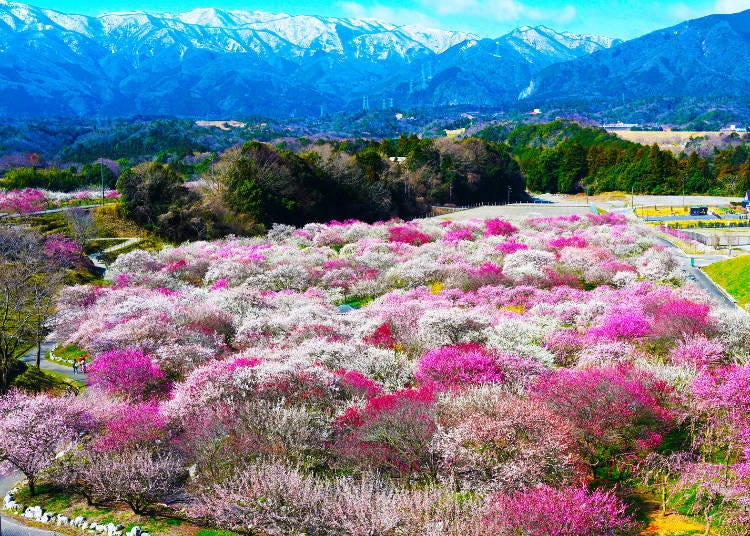
Close to the border with neighboring Gifu in the far north of Mie Prefecture is Inabeshi Agriculture Park. Though a variety of flowers bloom here throughout the year, the park is most commonly associated with plum trees, and for good reason. There are over 4,000 plum blossom trees in Inabeshi Agriculture Park and the adjacent Inabe City Bairin Park, with around 100 different varieties that burst into a wide spectrum of beautiful whites and pinks each year from around late February each year.
Every year in March, the park hosts a plum festival, when the plum blossom trees are usually in their prime. The park also has an observation tower, from which you can get a wonderful birds-eye view of the whole plum grove. From here, you can take in the complete range of the plum blossom’s spectacular colors against the backdrop of the Suzuka mountains.
-
Inabeshi Agriculture Parkいなべ市農業公園
- Address 3071 Fujiwarachokanae, Inabe, Mie 511-0501
Suzuka Forest Garden: Immerse in Natural Beauty
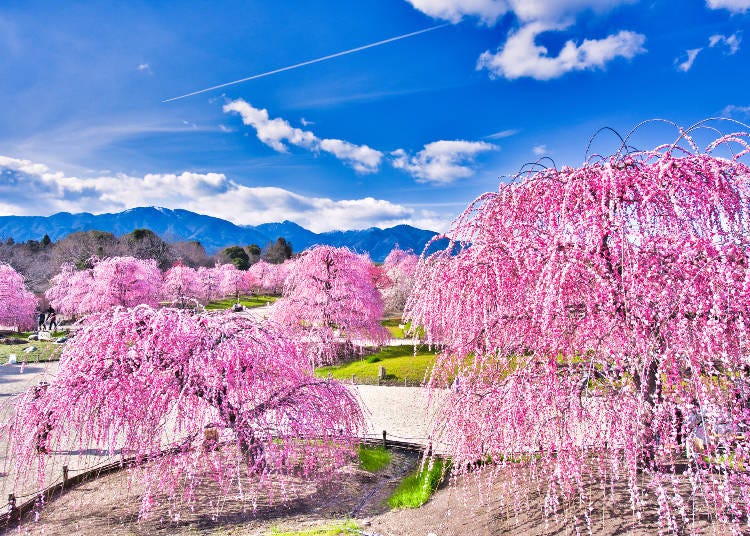
Suzuka Forest Garden is another of Mie’s famous plum blossoms viewing spots. The garden contains 200 stunning giant weeping plum blossoms, most of which are believed to be over 100 years old. The garden’s many different varieties of plum trees bloom in a wide range of vivid colors, with the blossoms ranging from strong whites, glowing pinks to deep dark reds.
Suzuka Forest Garden is only open during the spring, when the resident weeping plum blossom trees are in full spectacular bloom. The prime time to see the Suzuka Forest Garden’s plum blossoms varies each year, but typically early March is when they are at their most spectacular. The garden is also a great place to visit at night, when the plum blossom trees are beautifully illuminated after dark.
-
Suzuka Forest Garden鈴鹿の森庭園
- Address 151-2 Yamamotocho, Suzuka, Mie 519-0315
The 48 Falls of Akame: Trek and Admire Nature
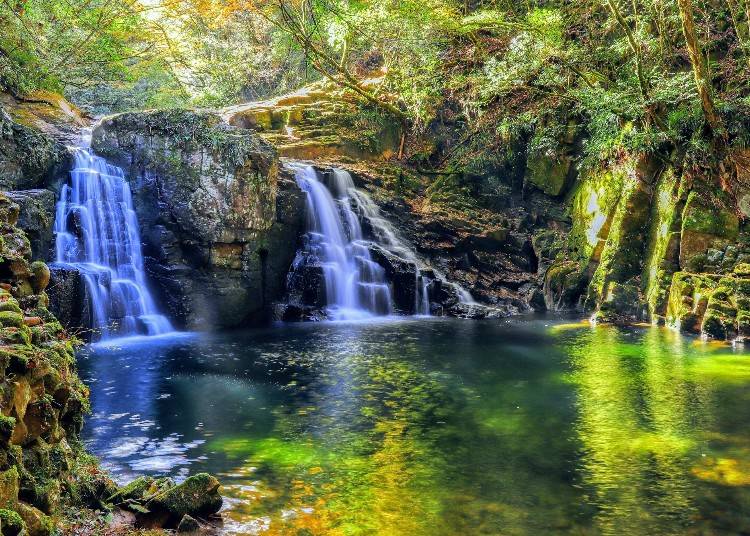
Hidden deep into rural Mie, close to the border with Nara Prefecture, the 48 Falls of Akame are a series of beautiful waterfalls located along a four kilometer stretch of the Akame Valley. It’s around a three hour walk through the valley to see all of the falls, and the walkway offers excellent views of the valley’s wondrous waterfalls.
Despite the name, there aren’t actually 48 waterfalls in total. This number is believed to derive from Buddhism - monks take 48 vows to achieve the status of Buddha. Akame’s waterfalls can be enjoyed and admired in all four seasons. Wild cherry blossoms bloom in the spring, and the valley is awash with greenery in the summer. In autumn, the forest’s trees turn bright orange and red, while snow covers the ground during the winter months.
-

-
Address
861-1, Akamechonagasaka, Nabari-shi, Mie, 518-0469
View Map -
Nearest Station
Akameguchi Station (Kintetsu-osaka Line)
10 minutes by bus
- Phone Number 0595-63-3004
-
Address
861-1, Akamechonagasaka, Nabari-shi, Mie, 518-0469
Gozaisho Ropeway: Soar to Panoramic Views
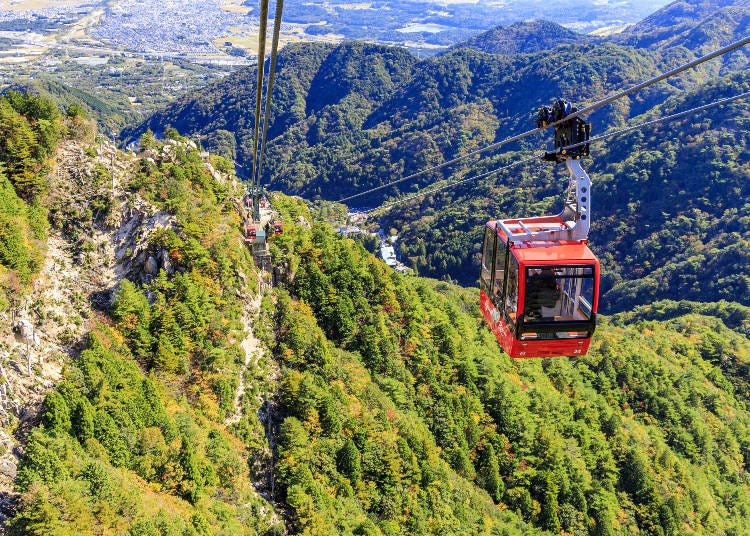
Located near the hot spring town of Yunoyama Onsen in the north of Mie Prefecture, the Gozaisho Ropeway carries passengers to the summit of Mount Gozaisho. One of the longest ropeways in Japan, it takes 12 minutes to reach the peak, passing high over the mountains before arriving at an altitude of 1,212 meters above sea level. The journey on the Gozaisho Ropeway takes in breathtaking views along the way, looking out over Yunoyama Onsen and nearby Yokkaichi, as well as over the distant Ise Bay.
Mount Gozaisho is a busy skiing destination in the winter, though the ropeway is a popular attraction all year round thanks to the beauty of Japan’s four seasons. In spring, the mountainside is awash with bright, beautiful azaleas, and in summer the area is a wonderful place to escape the heat. Come autumn the thick trees are a patchwork of red and orange leaves, while the snow covered mountain brings skiers to the slopes during the winter.
-

-
Address
Komono-cho, Mie Yunoyamaen, 510-1200
View Map -
Nearest Station
Yunoyamaonsen Station (Kintetsu-yunoyama Line)
10 minutes by bus
- Phone Number 059-392-2261
-
Address
Komono-cho, Mie Yunoyamaen, 510-1200
Maruyama Senmaida Rice Fields: Marvel at Terraced Beauty
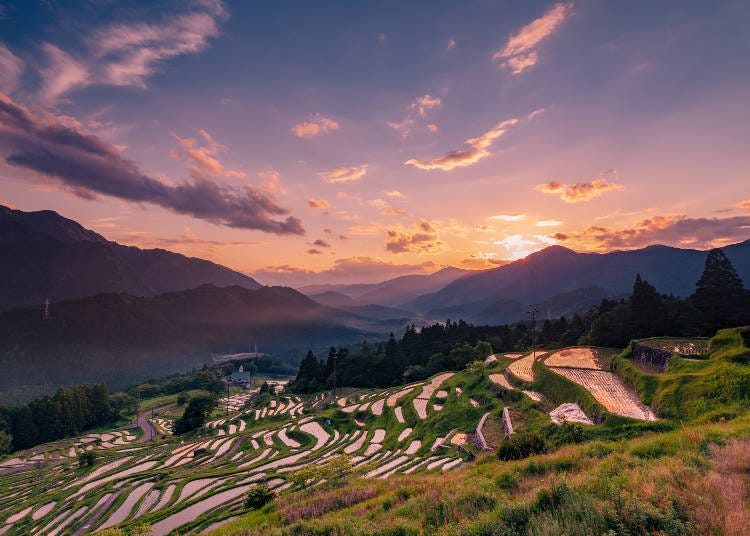
Japan’s countryside is known for its beauty, and Maruyama Sendaita is amongst one of the most stunning regions in rural Mie. Maruyama Sendaita is a terraced rice field in the far south of Mie Prefecture. The rice field features over 1,000 segments of land neatly cut into the slopes of Mount Shirakura to cultivate rice. The rice field is one of the largest in Japan and has been awarded a place on the list of 100 Terraced Rice Fields of Japan by the Japanese government.
There are fabulous views of the Maruyama Sendaita rice fields from the Kumano Kodo, a series of ancient pilgrimage routes that pass nearby. The rice fields are a wonderful sight at any time of year. From May to July the paddies are filled with water, which create a breathtaking scene as they reflect the colors of the sunset. In June, local villagers take part in a traditional festival called Mushi Okuri, when the rice fields are illuminated with fire and candles to scare away bugs that harm the crops.
-
Maruyama Senmaida Rice Fields丸山千枚田
- Address 318 Kiwacho Maruyama, Kumano, Mie 519-5405
<a href="https://www.maruyamasenmaida.jp/">Official website</a>
Sekijuku Post Town: Relive Japan’s Edo Era
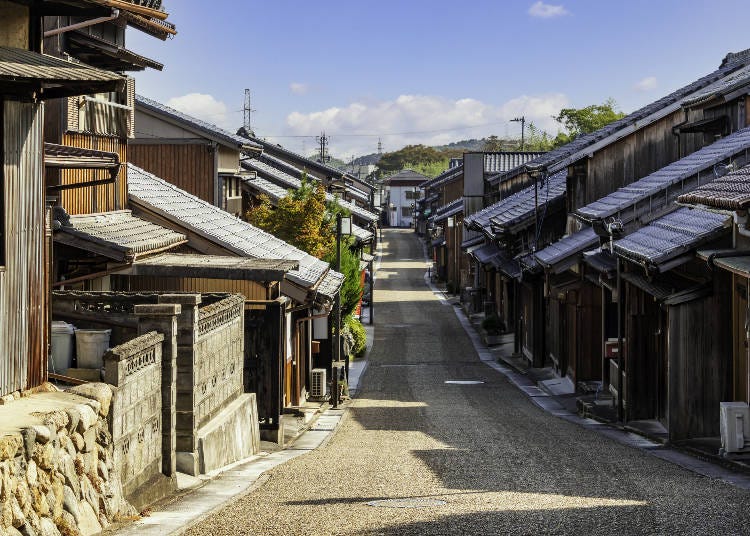
During Japan’s Edo Period, those looking to travel between Japan’s larger cities were restricted to walking along official routes called kaido. One of those routes, called the Tokaido, connected Tokyo with Kyoto. Along the Tokaido were several post towns, which were home to many restaurants and lodgings for travelers looking to stop for replenishment during their journey. One of the Tokaido’s best-preserved post towns is Sekijuku in Mie.
Sekijuku was an important stop on the Tokaido, thanks to its proximity to both Kyoto and the Ise Grand Shrine. Today, Sekijuku has been faithfully preserved, and a walk along its main street is like stepping into a different era. Many of the town’s beautiful old houses, shops, and temples still look as they would have done during the Edo Period. Sekijuku’s main street is still lined with traditional buildings that were once inns that catered to higher and lower-ranked travelers as they passed through the town between Tokyo and Kyoto.
Indulge in Delicious Matsusaka Beef
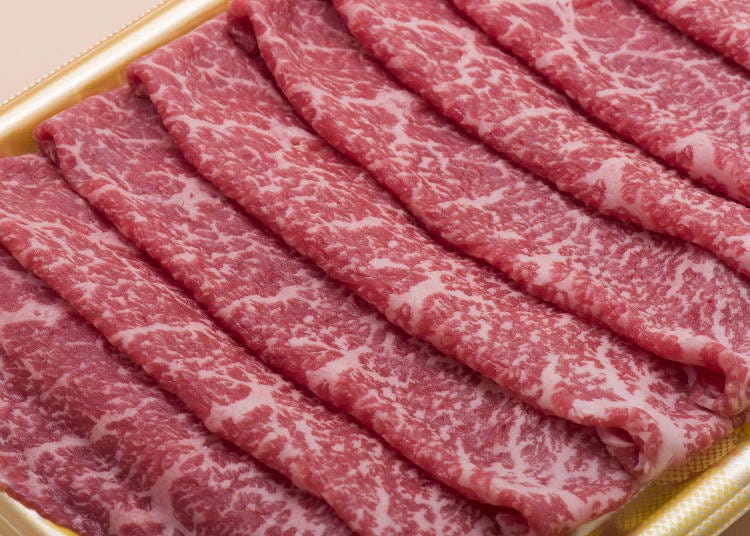
A local speciality, Matsusaka beef comes from cows from the Matsusaka region of Mie Prefecture. Along with Kobe beef and Omi beef, Matsusaka beef is one of three types of luxury wagyu that is reared to exceptionally high standards to create a meat packed with flavor. Matsusaka beef has a high fat content, and is known for its soft melt-in-the-mouth texture. It is commonly used as an ingredient in traditional Japanese dishes, such as sukiyaki and shabu-shabu.
Matsusaka beef comes from female cows, who are bred for around three years. All Matsusaka cows must be registered and are given their own ID code so that they can be identified as Matsusaka beef. Only around 2,500 Matsusaka cows are sold each year, meaning that the meat is often extremely expensive. In 2002, one Matsusaka cow sold at auction for an incredible 50 million yen (around $400,000)
Enjoy Drinks at Nagashima Beer Garden
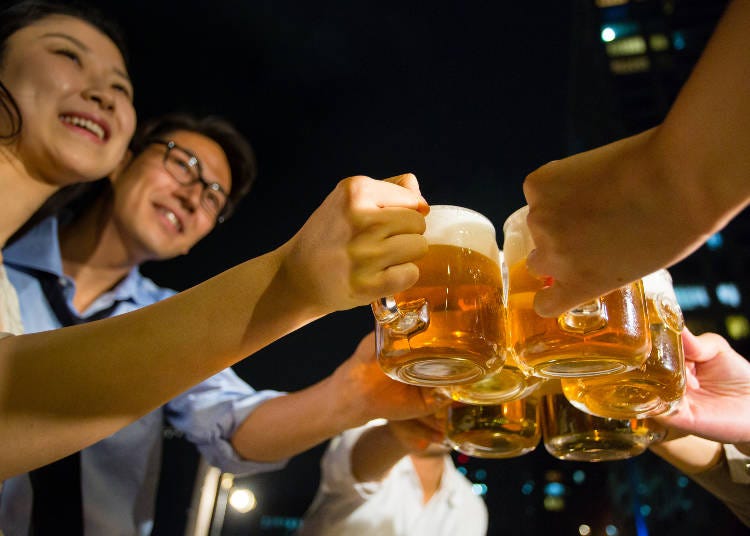
Nagashima Beer Garden is a European-style beer hall situated inside the Nabana no Sato flower park. Nagashima Beer Garden specializes in a great range of local malt beers, all brewed using water from the nearby Kiso River using the traditional methods of German breweries. There is both indoor and outdoor seating, meaning that you can enjoy a drink al fresco, or with a view overlooking the garden from inside.
As well as drinks, there’s also a huge choice of tasty food available at Nagashima Beer Garden. On the food menu are a number of main dishes, sharing platters and sides of Western and particularly German dishes, as well as a selection of local and seasonal dishes to enjoy too.
-
 Nagashima Beer Garden長島ビール園Has Health & Safety Measures
Nagashima Beer Garden長島ビール園Has Health & Safety Measures-
Address
Nagashimachokomae, Kuwana-shi, Mie Urushibata 270, 511-1144
-
Nearest Station
Kintetsunagashima Station (Kintetsu-nagoya Line)
-
Address
Nagashimachokomae, Kuwana-shi, Mie Urushibata 270, 511-1144
Spend Some Yen at Mitsui Outlet Park Jazz Dream Nagashima
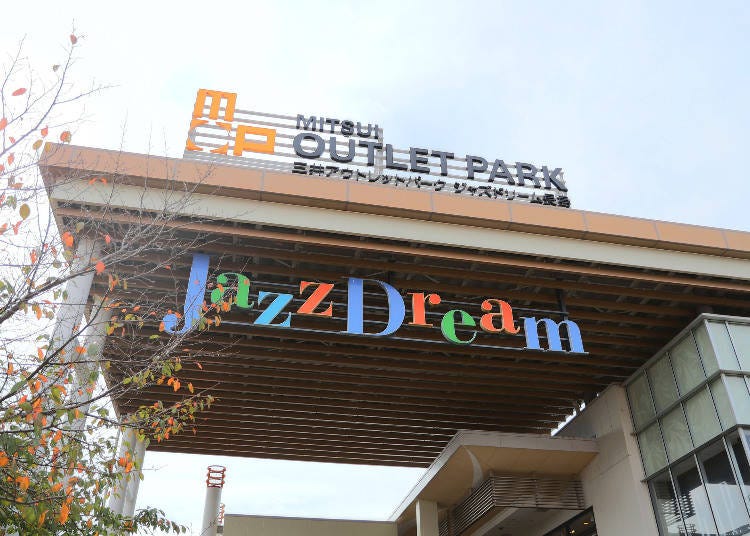
Just next door to Nagashima Spa Land as part of the massive Nagashima Resort, Mitsui Outlet Park Jazz Dream Nagashima is perfect for anyone in need of a heavy dose of retail therapy. Open every day of the year, this giant mall is home to over 250 shops, selling everything from fashion, jewelry, homewares and plenty more besides. Amongst the stores you’ll find here are many big name international and Japanese brands and retailers, including Dolce and Gabbana, Armani, Swarovski, and many more.
Prices in outlet malls in Japan tend to be slightly cheaper than in regular stores, so this is a great place to come if you’re looking to save a few yen. The majority of stores also offer tax-free shopping for tourists, meaning that you can save even more while you shop. There are also over 30 restaurants at Mitsui Outlet Park Jazz Dream Nagashima, perfect if you need a bite to eat after all that shopping.
Recommended Mie tours
- Area
- Category
*Prices and options mentioned are subject to change.
*Unless stated otherwise, all prices include tax.
Recommended places for you
-

Dotonbori
Other Sightseeing
Namba, Dotonbori, Shinsaibashi
-

Kanzenkoshitsuyakinikutabehodai Gyugyu Paradise Sannomiya
Yakiniku
Kobe, Sannomiya, Kitano
-
Goods

Yoshida Gennojo-Roho Kyoto Buddhist Altars
Gift Shops
Nijo Castle, Kyoto Imperial Palace
-

Kambei Sannomiyahonten
Yakiniku
Kobe, Sannomiya, Kitano
-

Jukuseiniku-to Namamottsuarera Nikubaru Italian Nikutaria Sannomiya
Izakaya
Kobe, Sannomiya, Kitano
-

ISHIDAYA Hanare
Yakiniku
Kobe, Sannomiya, Kitano
-

Hyogo Prefecture Guide: Destinations, Activities, Travel Advice, Shopping & More
by: Kaori Kimura
-

Kyoto Prefecture Guide: Destinations, Activities, Travel Advice, Shopping & More
-

Hotel Universal Port: A Fun-Filled Stay Where You Can Meet the Minions (In-Depth Review)
by: Tabiningen
-

2025 Osaka-Kansai Expo: Convenient Tips for a Stress-Free Visit
by: Kaori Kimura
-

Where to See Fireworks in Osaka & Kansai (July–October 2025)
-

teamLab Announces New Permanent Kyoto Museum Opening in Fall 2025
Inspiration for Accommodations
-

Spacious Family Hotel in Namba: 20 Comfortable Stays for Family Fun
-

Charming Hotels to Enjoy the Spectacular Views of Arashiyama's Autumn Leaves from Your Room
-

Experience Stunning Views of Osaka Castle from Private Spaces: Top Hotels Near Osaka Castle
-

Recommended by Visitors! Arashiyama's Best-Rated Hotels
-

Family-Friendly Universal Studios Japan Hotel with Excellent Access
-

Enjoy a Comfortable Stay in Osaka! 10 Hotels with Convenient Airport Shuttle Services
-

Top 10 Recommended Hotels Near Namba Station with Great Access
-

Enjoy Night Views from Your Room! Recommended Hotels in Namba Area
-

22 Fun Things to See and Do in Nara – Japan's 'Deer-ly' Beloved Cradle of Culture
-

5 Popular Shops and Gift Ideas Along Arashiyama Shopping Street
-

Fun-Filled Adventure! 5-Day Osaka Itinerary With Family-Friendly Attractions
-

Osaka Koreatown: In Search of the Best Eats in the Korean Roots of Osaka's Tsuruhashi Market
-

Family Trip: The 21 Best Things to Do in Osaka With Kids
by: Hiroko Ariga
-

Dining in Kyoto: Best Restaurants for Kaiseki, Sushi, Cafes & More
- #best gourmet Osaka
- #things to do Osaka
- #what to do in kyoto
- #what to bring to japan
- #best gourmet Kyoto
- #new years in Osaka
- #what to buy in nanba
- #Visiting Osaka
- #onsen tattoo friendly arima
- #daiso
- #Visiting Kyoto
- #best japanese soft drinks
- #japanese fashion culture
- #japanese convenience store snacks
- #japanese nail trends
















